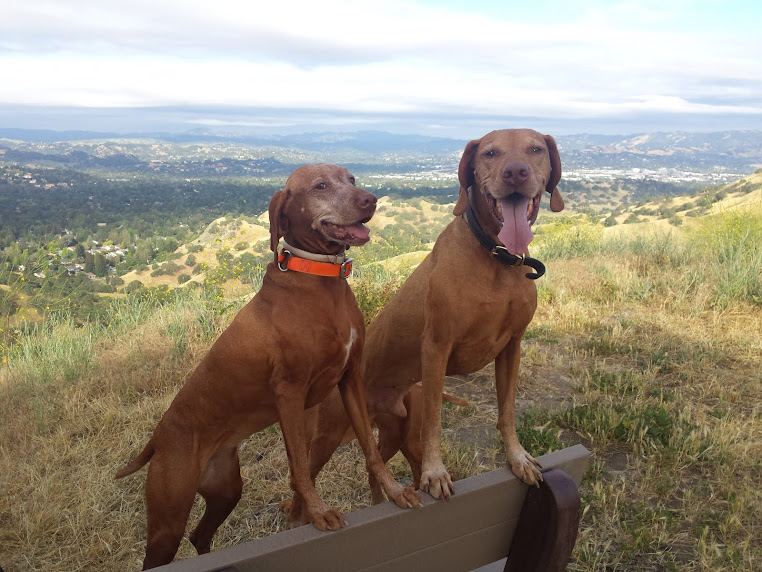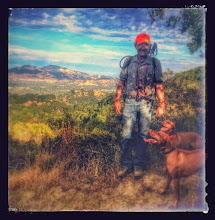This is one section of an article about running with your dog. for the full article, go to:
http://www.vizsladogs.com/ARTICLES/running.htm
"I have frequently been asked for advice. In general, most dogs love to run, and in most cases, it is perfectly safe for both you and your dog.
Your dog should be examined by your veterinarian before you start training together to assure that there are not underlying health problems that would prohibit running.
Heart disease does occur in dogs, as do orthopedic problems such as hip dysplasia, cruciate injuries, and even stress fractures.
Also, since your dog will be in contact with other dogs, it is especially important that he or she be up to date on all vaccinations.
Your veterinarian will also be able to advise whether your dog is old enough to start a training schedule.
It is best to limit a puppy to short jogs of one to two miles, whereas an adult may well be able to go four miles on the first day.
Since different breeds mature at different rates, your veterinarian should advise whether your dog is ready.
In general, most large breed dogs (retrievers, pointers (VIZSLA), and shepherds) reach skeletal maturity between eight months and one year, while the giant breeds (Great Danes, Newfoundlands, and wolfhounds) may take up to two years.
Usually, by the time your dog is ready to start training with you, he or she is already neutered and has had at least basic obedience lessons. Taking an unneutered dog on a run invites potential problems -- males may make frequent stops to mark territory or have a propensity to start fights, and a female in heat may attract other dogs.
Your dog should be trained to heel so the two of you can safely negotiate obstacles, such as other animals, people, and cars. Your human running partners will not appreciate it if your dog trips them. You may need to teach your dog a new command for running, one to keep him going when he gets distracted. A gentle "c'mon" or "move" usually works well; "go" sounds too much like "no" and may stop your dog from moving altogether.
Just as you would not eat a large meal before a run, neither should your dog. This is particularly important in large, deepchested dogs such as Dobermans and Great Danes, as they are at risk for bloat or gastric torsion.(The stomach swings freely in the front of the abdomen and can twist with the weight of undigested food.)
After a run, allow your dog to drink small amounts frequently before letting her drink as much as she wants, and always wait 30 minutes to an hour before feeding. She should be cool and relaxed before she eats.
5 months ago









No comments:
Post a Comment